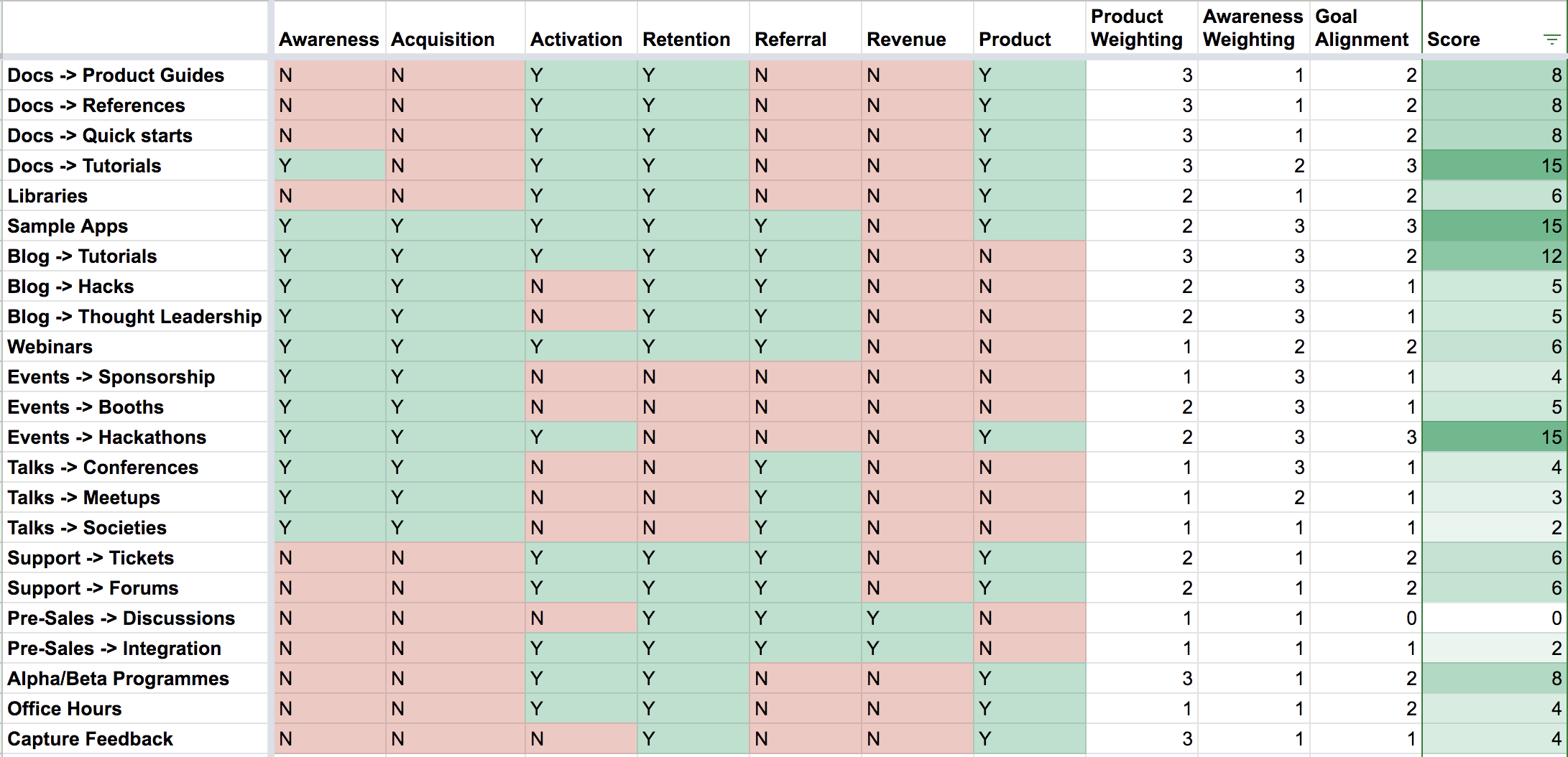The AAARRRP Developer Relations Strategy Framework
AAARRRP is a framework that helps you define your Developer Relations strategy. In its simplest form, it provides a mechanism for mapping the company goals for developer relations through to the activities that will help you achieve those goals. Since activities for some goals naturally feed into helping you achieve other goals, you can potentially adopt AAARRRP as a funnel or a loop.
What does the acronym AAARRRP stand for?
AAARRRP was adapted and inspired by AARRR pirate metrics in 2016 by Phil Leggetter. But, where as AARRR was focused on “Startup metrics for Product Marketing and Product Management” and stood for:
- Acquisition - users come to the site from various channels
- Activation - users enjoy 1st visit: “happy user experience”
- Retention - users come back, visit multiple times
- Referral - users like product enough to refer others
- Revenue - users conduct some monetizing behavior
AAARRRP is a framework for defining a Developer Relations strategy where each acronym identifies a potential business goal for a Developer Relations team. Additionally, the definitions change slightly and two further business goals, Awareness and Product, are added:
- Awareness - users become aware of your product
- Acquisition - users signup for your product
- Activation - users successfully use your product
- Retention - users continue to use the product and potentially increase usage
- Referral - users like product and company brand enough to refer others
- Revenue - users conduct some monetizing behavior
- Product - users and the developer relations team help define and build the product as well as gather feedback from users to enhance your product
AAARRRP Goals
Each acronym in AAARRRP represents a potential goal that your company can have for your Developer Relations team.
Here are a few different scenarios where a company will have different AAARRP goals:
- An API platform startup with an overarching goal of demonstrating clear interest in a product to their investors may have goals of Awareness, Acquisition and Referral to drive further awareness and acquisition.
- A SaaS company with an API product offering may want to see increased Activation, Product enhancements that will enable that activation, and Revenue from the increase in activations. An open source framework may be looking to build a community through Referral to then help improve the Product offering through feedback and contribution.
The company goals for a Developer Relations team may also change depending on a number of other factors.
- Has a product-market fit been determined?
- Where is the product within the product development lifecycle?
- What investment has been allocated to the Developer Relations program?
- Who owns the Developer Relations budget within the organisation?
- Are other teams delivering on some of the activities meaning Developer Relations should focus elsewhere?
The lifecycle of your product significantly influences Developer Relations goals. Early on in a product’s existence it’s important to determine product market fit; is there a clear demand for the product? Or to ensure the product meets some fundamental requirements such as following basic API guidelines, having documentation and sample code to help prospective customers get started, or demos to show what the product makes possible and as a sales-enablement tool. In later stages of product development the focus may be more on growth and the Developer Relations goals and associated activites will follow suit.
Mapping AAARRRP Goals to Activities
In its simplest form, AAARRRP can be seen as a mechanism for mapping company goals to Developer Relations activities. Activities are the pieces of work that a Developer Relations team will undertake and those activities will differ depending on the company goals.
If the Developer Relations goals focus on Product, then activities will likely be around documentation, sample code, libraries, and SDKs. If Awareness and Acquisition are the goals, then blog content, events, webinars, live streams (e.g. Twitch) and talk are the types of activities that will align with those goals.
The image below (from a Nexmo AAARRRP Google Sheet) shows the work we did a Nexmo in 2016 to 2017 where are goals were Product, Awareness and Activation with Product and Awareness being the priority goals.

We added some additional columns to the spreadsheet:
- Product Weighting: to provide a deeper indication of how well the activity aligned with the Product goal
- Awareness Weighting: to provide a deeper indication of how well the activity aligned with the Awareness goal
- Goal Alignment: counting how many of the goals (Awareness, Activation & Product) the activity aligned with
- **Score: A formula to help us identify which activities we should choose (
(Product Weighting + Awareness Weighting) * Goal Alignment).
This helped us identify that we should focus on the following to achieve the company goals:
- Docs -> Tutorials
- Sample Apps
- Blog -> Tutorials
- Events -> Hackathons
An Introduction to AAARRRP (Video)
The following description and video is from a talk given at DevRelCon London 2016.
Building a DevRel programme is hard. What are the goals of the programme, how do they align with the company goals, what activities should the new Developer Relations team undertake, how do those activities help other departments within the company and how should the success of the team be measured?
In this talk from DevRelCon London 2016, Phil Leggetter describes his AAARRRP framework for developer relations strategy.
AAARRRP Resources
- Introducing the AAARRRP devrel strategy framework on devrel.net
- AAARRRP Google Sheets template
- AAARRRP applied at Nexmo: 2016 - 2017
- Original “Defining Developer Relations” blog post
Also see
- The Orbit Model - “a vocabulary and visual canvas that helps organizations understand, manage, and grow their community”